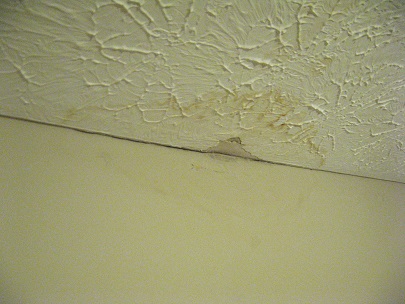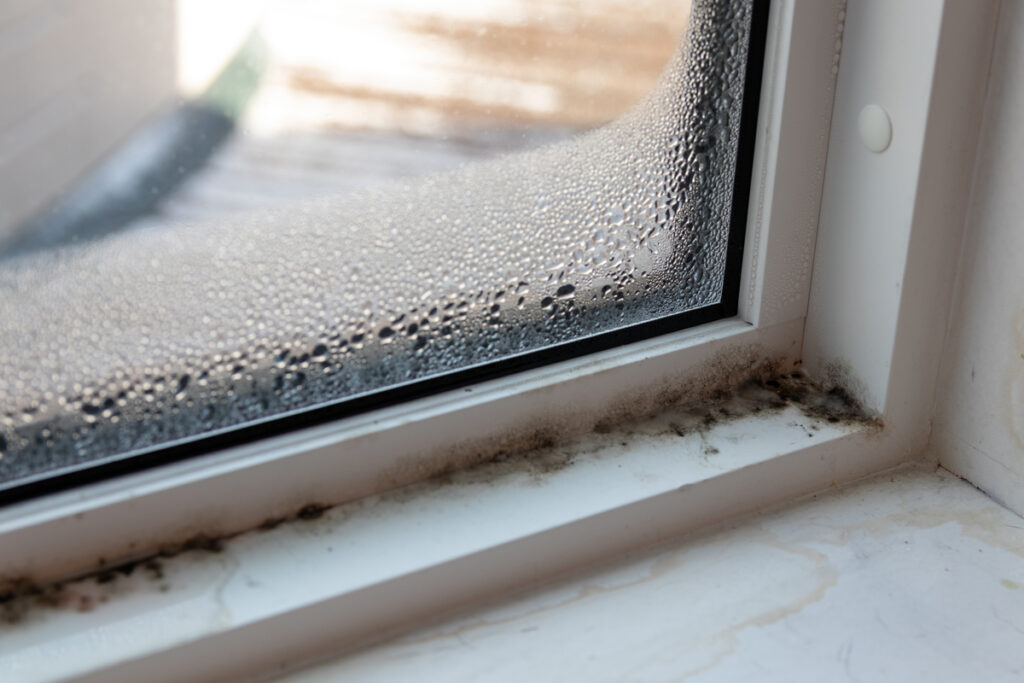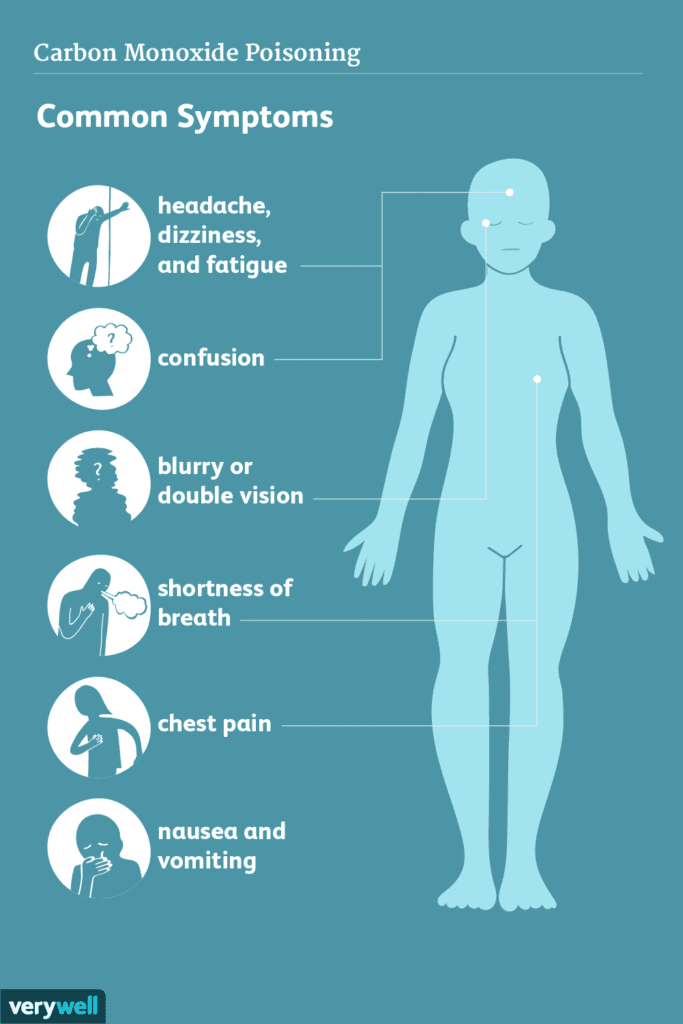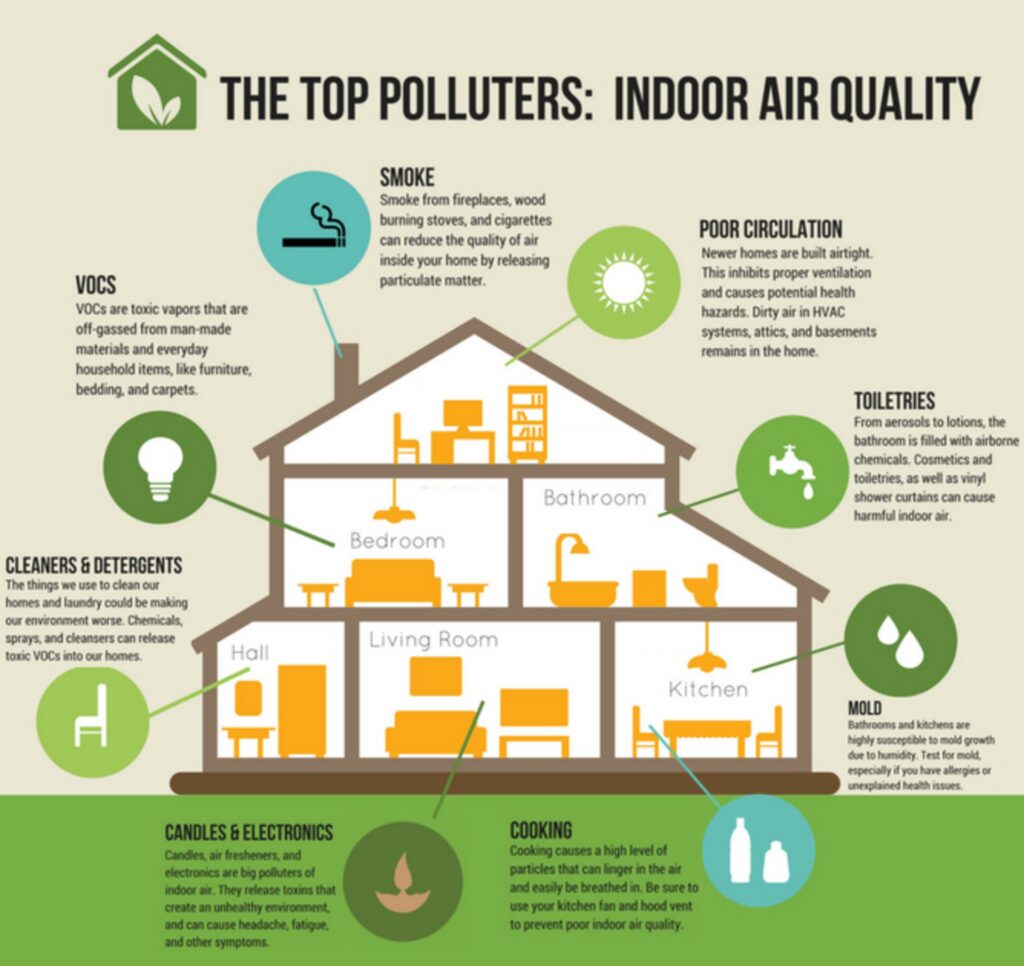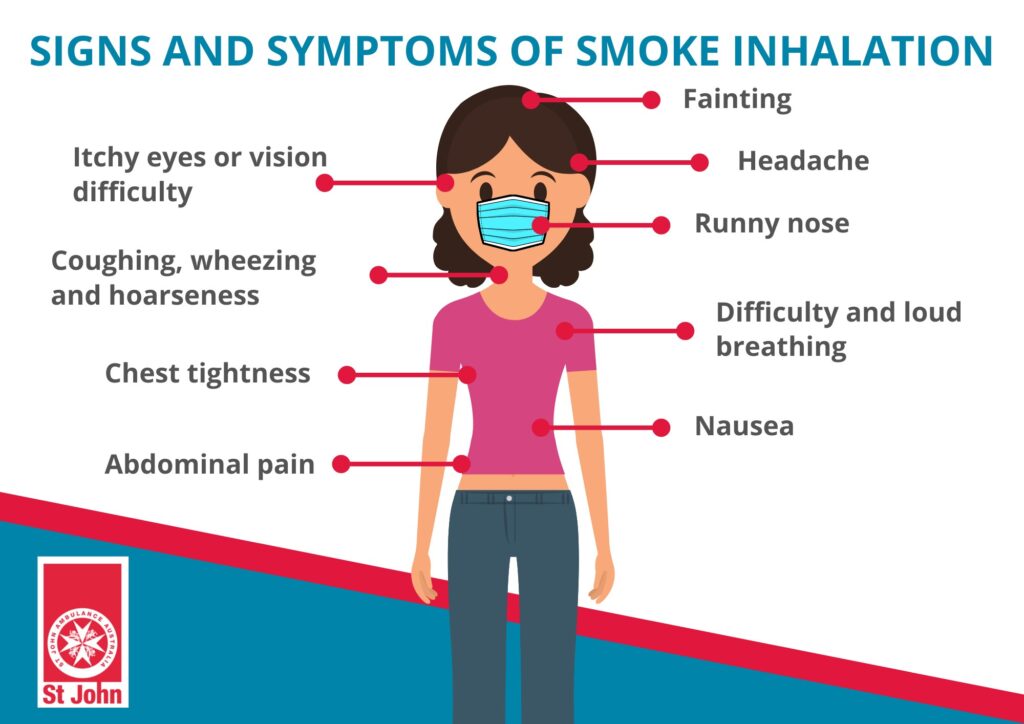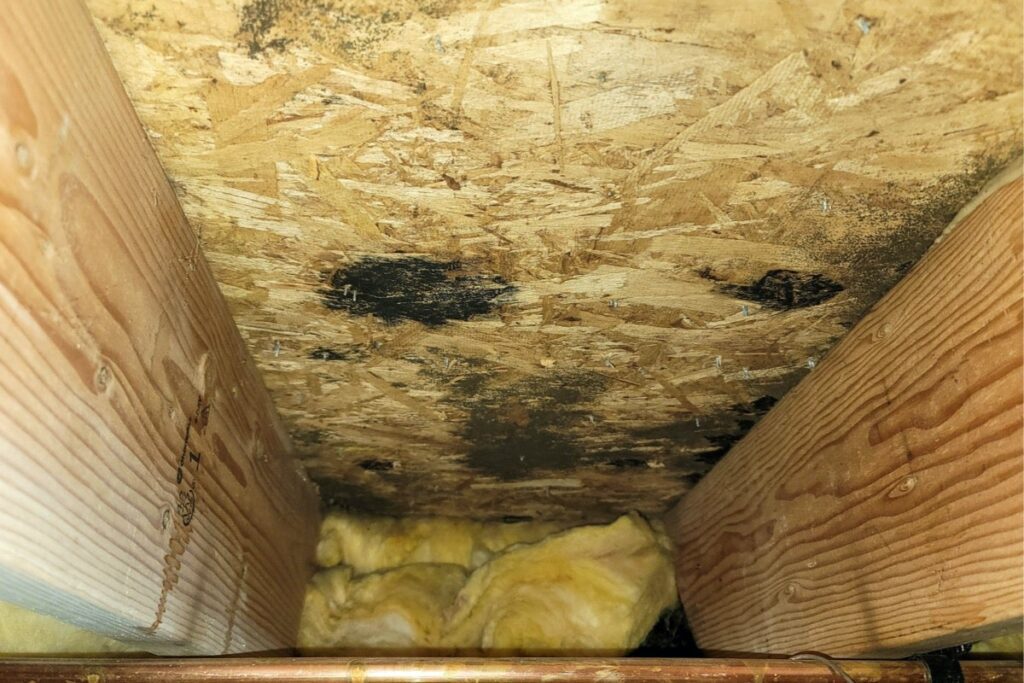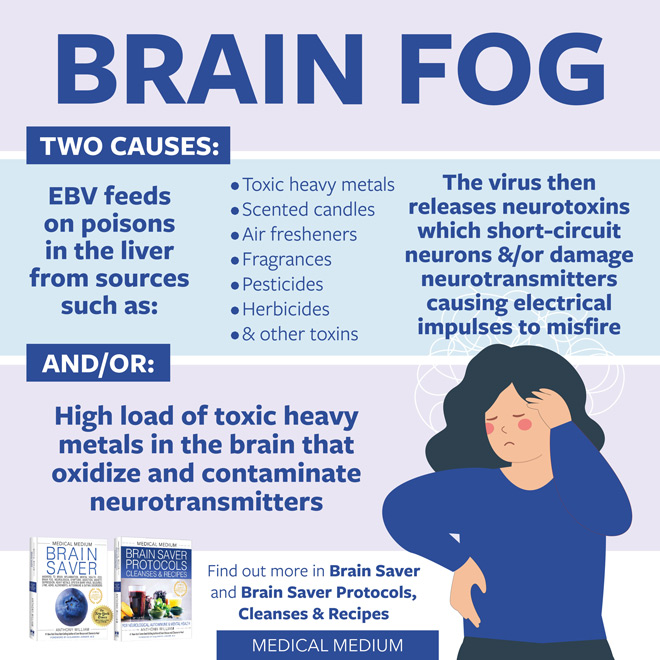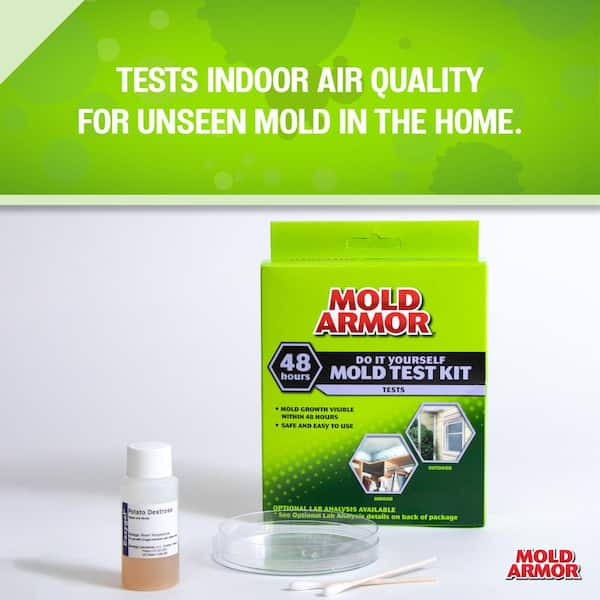Living in a clean and healthy environment is crucial for your overall well-being, but sometimes harmful substances like hidden mold can go unnoticed in your house. Mold, if left untreated, can lead to various health issues and damage to your property. In this article, you will learn some telltale signs that can indicate the presence of hidden mold in your house, helping you take the necessary steps to address the issue promptly and effectively. Hidden mold can be a troublesome issue in any home, as it can cause a range of health problems and structural damage if left unchecked. But how do you know if you have hidden mold in your house? In this article, we will explore the signs of hidden mold, where to check for it, how to identify it, and what steps you can take to prevent and address it. So, let’s dive in and become mold detectives in our own homes!


Signs of Hidden Mold in Your House
Musty Odor
One of the most common signs of hidden mold is a musty or earthy odor. If you notice a lingering smell that you can’t quite place, it could be a sign that mold is growing somewhere in your home. This odor often occurs in areas with high moisture levels, such as basements, bathrooms, and crawl spaces. If you can’t locate the source of the smell, there’s a good chance it’s hidden mold.
Allergic Symptoms
If you or your family members start experiencing allergic symptoms that seem to worsen when you’re at home, it could be a sign of hidden mold. Common allergic reactions to mold include sneezing, coughing, watery eyes, and a runny nose. These symptoms may be more noticeable when you’re in specific areas of your home, such as the basement or attic, where mold growth is more likely.
Visible Moisture or Water Damage
Visible moisture or water damage on surfaces is a clear indication that you may have hidden mold in your house. Look for discolored patches on walls, ceilings, or floors, as well as peeling paint or wallpaper. These signs often suggest that moisture has seeped into the structure, creating an ideal environment for mold to grow. Don’t ignore these visual cues, as they could be a sign of a larger mold problem.
Water Leaks
Water leaks are like a welcome mat for mold. If you’ve experienced any recent water leaks in your home, such as a burst pipe, roof leak, or plumbing issue, there’s a high chance that mold may be lurking behind the scenes. Mold thrives in damp environments, so it’s crucial to address and repair any leaks promptly to prevent mold growth.
Peeling Paint or Wallpaper
Peeling paint or wallpaper can often be a sign of hidden mold. When moisture gets trapped underneath the surface, it can cause the paint or wallpaper to bubble, crack, or peel. If you notice these signs, it’s essential to investigate further and determine if mold is the underlying cause. Remember, mold loves moisture, so any signs of peeling should be taken seriously.
Condensation
Condensation is another sign that mold may be present in your home. If you frequently see water droplets or moisture buildup on windows, mirrors, or other surfaces, it indicates high humidity levels. Excess moisture in the air can promote mold growth, so it’s important to monitor and address condensation issues promptly.
Damp or Humid Areas
Certain areas in your home are more prone to dampness and humidity, making them ideal breeding grounds for mold. Basements, bathrooms, laundry rooms, and crawl spaces are common culprits. If these areas consistently feel damp or humid, it’s crucial to investigate for hidden mold. Keep a close eye on any visible signs of mold growth or related problems in these spaces.
Discoloration or Stains
Discoloration or stains on walls, ceilings, or other surfaces can be a telltale sign of hidden mold. Mold often appears as black, brown, green, or white patches which stand out against the surrounding area. Pay close attention to these discolorations and address them promptly to prevent further mold growth and potential health hazards.
Moldy Smell from HVAC System
Your HVAC system can be a hidden hotspot for mold growth, especially if it’s not properly maintained. If you notice a moldy smell when you turn on your heating or cooling system, it’s essential to investigate further. Mold can accumulate in air ducts, filters, and other components of the HVAC system, potentially spreading throughout your home. Don’t ignore any foul odors coming from your vents and address them promptly.
Unexplained Health Issues
If you or your family members are consistently experiencing unexplained health issues, such as respiratory problems, headaches, or allergies, hidden mold may be the culprit. Mold spores can trigger or exacerbate existing health conditions, so it’s crucial to consider mold exposure as a potential cause. If these health issues seem to improve or worsen depending on the time spent in specific areas of your home, it’s essential to investigate for hidden mold.
Now that we’ve explored the signs of hidden mold, let’s move on to where you should check for it in your home.
Where to Check for Hidden Mold
Basement
The basement is a common area for hidden mold, as it tends to have higher humidity levels and is more susceptible to water damage. Check for any signs of water leaks, moisture buildup, or musty odors in your basement. Pay close attention to any visible piping, water heaters, sump pumps, and walls.
Attic
Attics can accumulate moisture from roof leaks or inadequate insulation, making them an ideal environment for mold growth. Inspect your attic carefully, looking for any signs of water damage or discoloration on the walls, ceilings, or insulation. Check for proper ventilation and ensure that your roof is in good condition.
Crawl Spaces
Crawl spaces are often forgotten areas that can harbor mold if not properly maintained. Check for signs of moisture, condensation, or water leaks in your crawl spaces. Inspect the insulation, foundation walls, and any exposed pipes or ductwork for any visible mold or dampness.
Bathrooms
Bathrooms are notorious for mold growth due to high humidity levels and frequent water exposure. Check for mold or mildew in the tiles, grout lines, shower curtains, and around sinks and toilets. Ensure proper ventilation by using exhaust fans or opening windows during and after showering.
Under Sinks
The area under sinks can be a hidden hotspot for mold growth, especially if there are plumbing leaks or poor ventilation. Inspect the cabinet area under your sinks, looking for any signs of water damage, musty odors, or visible mold. Fix any leaks promptly to prevent further mold growth.
Laundry Rooms
Laundry rooms are often humid spaces, especially if they lack proper ventilation. Check for signs of moisture or mold growth on walls, ceilings, and around the washing machine or dryer. Ensure that your laundry room has adequate airflow and consider using a dehumidifier if needed.
Wall Cavities
Hidden mold can sometimes lurk within wall cavities. While it may not be visible, you may notice signs such as peeling paint or wallpaper, musty odors, or even stains on the walls. If you suspect mold within your walls, it’s essential to contact a professional for further inspection and remediation.
Ceilings and Walls
Ceiling tiles and walls, particularly in areas with water pipes or roof leaks, can be breeding grounds for hidden mold. Look for any signs of water damage, discoloration, or peeling paint on your ceilings and walls. If you notice any suspicious areas, consider hiring a professional to conduct a thorough inspection.
HVAC System
Your HVAC system can circulate mold spores throughout your home if it’s contaminated with mold. Regularly inspect your air ducts, filters, and vents for any signs of mold growth or musty odors. Consider having your HVAC system professionally cleaned and maintained to prevent mold-related issues.
Windows and Doors
Windows and doors can sometimes develop moisture issues, leading to hidden mold growth. Check for condensation on windows, especially in rooms with higher humidity levels. Inspect the areas around windows and doors for any signs of water damage, discoloration, or mold growth.
Now that we know where to check for hidden mold, let’s explore how to identify it.
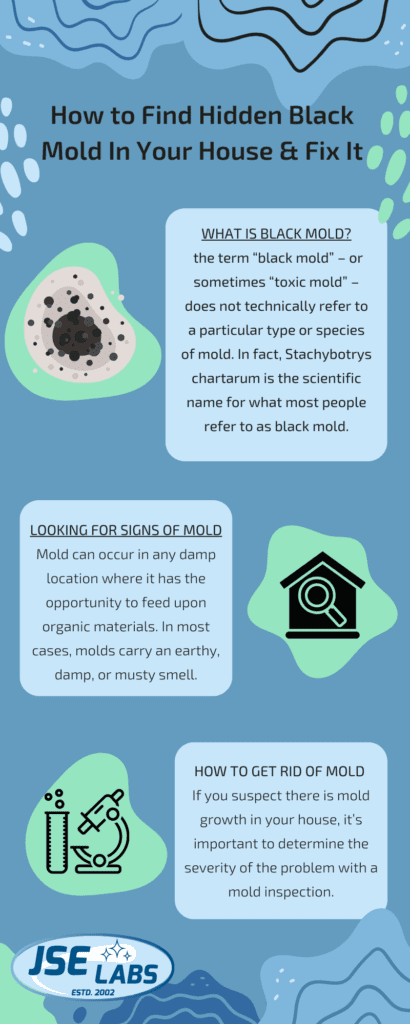

How to Identify Hidden Mold
Use a Moisture Meter
A moisture meter is a handy tool that can help identify areas of high moisture content, which can be indicative of hidden mold. Simply place the moisture meter on different surfaces throughout your home and follow the manufacturer’s instructions to determine the moisture levels. High moisture readings may warrant further investigation for hidden mold.
Perform a Visual Inspection
Carefully inspect your home, paying attention to any visible signs of mold growth, water damage, or musty odors. Look behind furniture, beneath carpets, and in other hard-to-reach areas where mold can thrive. Take note of any discoloration, stains, or peeling materials, as these can indicate the presence of hidden mold.
Check for Moldy Smells
Trust your nose! If you notice persistent musty or moldy smells in specific areas of your home, it’s a strong indication that mold may be present. Follow the scent and investigate further for any visible signs of mold growth or underlying moisture issues.
Consider Hiring a Professional
If you’re unsure about identifying hidden mold or suspect a large-scale mold problem, it’s best to hire a professional mold inspector. They have the expertise and specialized tools to thoroughly assess your home for mold and recommend appropriate remediation steps if necessary. Professional mold inspections can provide peace of mind and ensure a comprehensive approach to mold detection.
Now that we know how to identify hidden mold, let’s move on to preventing its growth.
How to Prevent Hidden Mold Growth
Monitor and Control Humidity Levels
Maintaining optimal humidity levels in your home is crucial for preventing mold growth. Invest in a humidity meter to monitor humidity levels regularly. Ideally, indoor humidity should be kept below 50%. If necessary, use dehumidifiers or open windows to improve airflow in humid areas.
Fix Plumbing Leaks Promptly
Any water leaks, no matter how small, should be addressed promptly to prevent mold growth. Regularly inspect your plumbing system, including pipes, faucets, and toilets, for any signs of leaks. Repair any leaks immediately and ensure proper drainage to prevent excess moisture buildup.
Ensure Proper Ventilation
Proper ventilation is essential in preventing mold growth. Ensure that your home has adequate airflow by utilizing exhaust fans in kitchens and bathrooms, opening windows when weather permits, and using ventilation systems. This will help expel moist air and prevent it from creating a conducive environment for mold growth.
Use Mold-Resistant Materials
When renovating or constructing your home, consider using mold-resistant materials in areas prone to moisture, such as bathrooms and basements. These materials are specially designed to resist mold growth and can significantly reduce the chances of hidden mold becoming a problem.
Clean and Dry Water-Damaged Areas
If you have experienced any water damage, such as flooding or leaks, it’s crucial to promptly dry and clean the affected areas. Use fans, dehumidifiers, or professional drying services to ensure thorough drying. Remember, mold can start growing within 24-48 hours of moisture exposure, so time is of the essence.
Regularly Inspect and Maintain Your Home
Regular home maintenance can go a long way in preventing hidden mold growth. Inspect your home regularly for any signs of water leaks, condensation, or moisture issues. Keep your gutters clean, seal any cracks or gaps in your home’s exterior, and ensure that your roof is in good condition. Addressing these issues promptly can help prevent mold growth before it becomes a larger problem.
Now, let’s explore the steps to take if you do find hidden mold in your home.


What to Do if You Find Hidden Mold
Determine the Extent of the Problem
If you find hidden mold, it’s crucial to assess the extent of the problem before taking any further action. Determine how far the mold has spread and identify any underlying causes, such as water leaks or high humidity. Understanding the extent of the issue will help you develop an effective remediation plan.
Remove Moldy Materials
Begin by removing any moldy materials that cannot be salvaged. This may include damaged drywall, carpets, or furniture. Safely dispose of these materials following local regulations, ensuring that you don’t spread mold spores while doing so.
Clean and Disinfect the Area
Thoroughly clean and disinfect the affected area to remove any remaining mold spores. Use a mixture of water and bleach or a commercial mold cleaner, following the product instructions carefully. Scrub surfaces, walls, and floors, and ensure proper ventilation during the cleaning process.
Address the Underlying Cause
To prevent future mold growth, it’s crucial to address the underlying cause of the mold problem. Repair any water leaks, improve ventilation, or address any moisture-related issues in your home. By eliminating the source of moisture, you can reduce the risk of mold returning.
Consider Professional Mold Remediation
In some cases, professional mold remediation may be necessary, especially for larger mold problems or when mold is present in sensitive areas such as HVAC systems or wall cavities. Professional mold remediators have the expertise and specialized equipment to safely and effectively remove mold from your home.
Conclusion
Being aware of the signs of hidden mold in your house is essential for maintaining a healthy and mold-free home. By knowing what to look for, where to check, how to identify, and how to prevent and address hidden mold, you can take proactive steps to protect your home and your family. Remember, early detection and intervention are key to preventing mold-related health issues and structural damage. So, put on your detective hat and keep your home mold-free!
